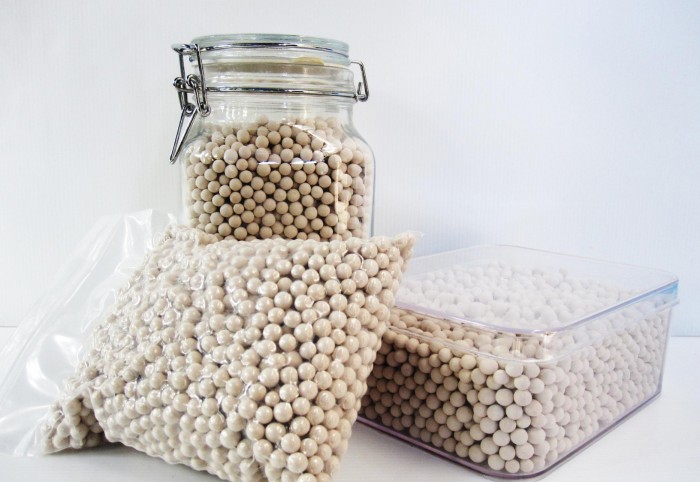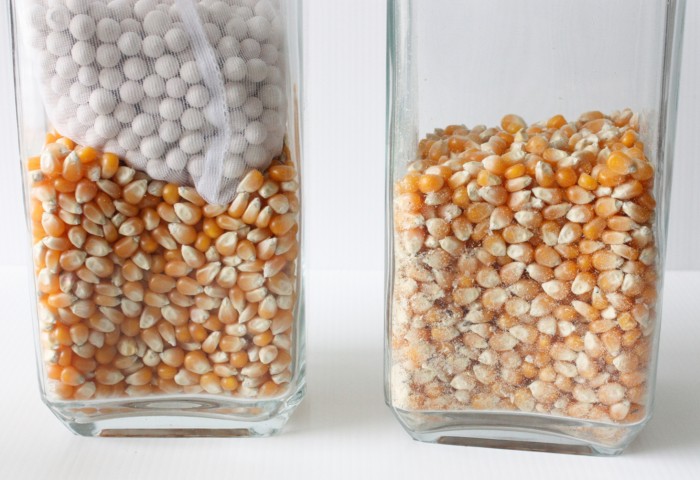Absorbent Beads Could Save Energy—and Lives


Plant scientist Kent Bradford believes a simple ceramic bead that sucks moisture out of the air can make agriculture far more energy efficient and much less expensive.
The beads are made from zeolites, a class of porous minerals that readily bind with certain materials. In this case, the pores were engineered to be just the right size and shape to trap water molecules. Bradford, a professor of plant sciences at the University of California, Davis, estimates they could cut the energy used in large-scale drying operations in half and, in humid parts of the world, greatly reduce the loss of crops to rot and fungal toxins.
The beads were developed by Rhino Research in Thailand. Bradford and his collaborators there have spent several years testing and refining the technology with local farmers in that country as well as in India, Nepal, Kenya, and other tropical nations, where as much as a third of crops are lost before reaching consumers. In those areas, the beads are placed alongside, say, harvested rice or maize seeds, separated in mesh sacks or screened-in compartments within containers. They then capture water from the air, significantly reducing the moisture that leads to rot and fungal infections.
Now the researchers are working to bring the technology to richer nations at the industrial scale, exploring its use to dry harvested almonds, walnuts, rice, and grains. Typically, farming operations blow hot air through harvested crops as they pass through drying towers or silos. But experiments show that ambient air can work just as well, if it’s first dried by passing it through the beads. The researchers also believe this approach can improve the quality of the end product, because uneven air heating frequently scorches parts of the batch, ruining the taste of nuts and other foods.
The beads themselves still need to be heated in the end, in order to remove the water so they can be reused. But that can be done in a compact space like an oven, which is far more efficient than blowing around heated air.
Keep Reading
Most Popular
Large language models can do jaw-dropping things. But nobody knows exactly why.
And that's a problem. Figuring it out is one of the biggest scientific puzzles of our time and a crucial step towards controlling more powerful future models.
The problem with plug-in hybrids? Their drivers.
Plug-in hybrids are often sold as a transition to EVs, but new data from Europe shows we’re still underestimating the emissions they produce.
Google DeepMind’s new generative model makes Super Mario–like games from scratch
Genie learns how to control games by watching hours and hours of video. It could help train next-gen robots too.
How scientists traced a mysterious covid case back to six toilets
When wastewater surveillance turns into a hunt for a single infected individual, the ethics get tricky.
Stay connected
Get the latest updates from
MIT Technology Review
Discover special offers, top stories, upcoming events, and more.